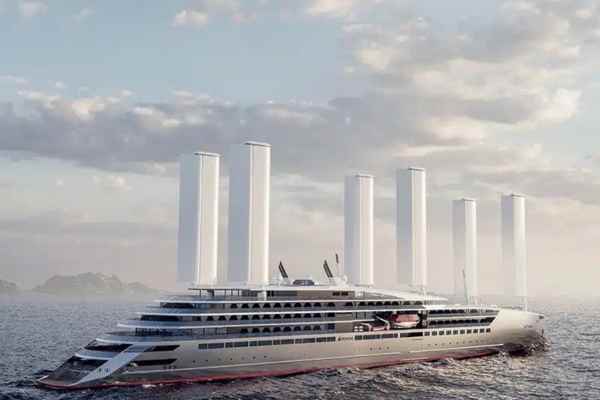A cruise ship powered by sails
Is this wind-assisted transoceanic ship concept the future of cruising?

Luxury cruise operator Ponant has received a green light for its groundbreaking Swap2Zero sustainable ship concept.
The sail-powered design aims to set new standards in carbon-neutral navigation and Bureau Veritas, a global testing, inspection and certification company, has granted Approval in Principle (AiP) for the concept.
The 186.2-metre vessel is expected to be completed by 2030 and combines six advanced technologies designed to dramatically reduce emissions.
It is estimated that a large cruise ship can use over 300,000 litres of marine fuel per day, based on tests performed by the University of Colorado. Burning these huge quantities of fuel impacts both air and water quality along the ship's route.
Ponant, a provider of luxury and adventurous exploration cruises, says it hopes to use Swap2Zero as a catalyst for industry-wide adoption of new energy solutions.
"This is much more than a new ship," Ponant CEO Hervé Gastinel said. "We want to offer a new mode of navigation and actively contribute to the decarbonisation of the maritime sector."
The vessel will be equipped with a range of renewable energy sources, including wind and solar power, hydrogen fuel cells, and biofuels.
"We want to offer a new mode of navigation and actively contribute to the decarbonisation of the maritime sector."
Wind propulsion will be the primary power source, enabling the ship to operate for up to 30 days with 50% wind assistance. Additionally, its designers say the vessel can function for 15 days without wind at a steady 10 knots.
Among its sustainability features are 1,000 square meters of solar panels, dual-fuel engines, and a carbon capture system that stores CO2 emissions for reuse or secure storage.
The concept also incorporates waste heat and cold recovery systems, further boosting its eco-friendly credentials.
The Swap2Zero concept was developed in collaboration with naval architecture firm Stirling Design International and “exemplifies a significant advancement in maritime sustainability," according to Andreas Ullrich, Global Market Leader of Passenger Ships & Ferries at Bureau Veritas.
"We are delighted to support such innovative projects that set new standards for eco-friendly maritime travel."
Earlier this year, Ponant became the first cruise liner to achieve Green Globe tourism certification across its fleet, and it describes the Swap2Zero concept as both a technological showcase and a real-world test of decarbonisation strategies.
Swap2Zero aims for zero CO2 emissions by combining six major decarbonisation technologies that include a sail power system and hull providing an average of 50% of the propulsion energy, over 1,000m² of photovoltaic panels, onboard carbon capture technology, a low-temperature fuel cell operating on liquid hydrogen for propulsion and a high-temperature fuel cell to meet the ship’s hotel load requirements. The Bureau Veritas Approval in Principle for the project was granted in accordance with key international conventions as well as its own standards for steel ships, wind propulsion systems and hydrogen-fueled ships.





